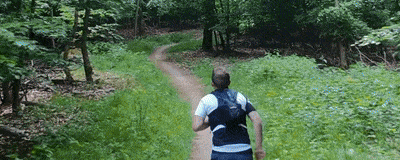Tag: Analysis
-

From Sky to Trail: Testing GPS Accuracy with Drones, Action Cam and Smartwatch
In the early days of mapping and cartography experiments, GPS tracks were often the starting point. Contributors to the OpenStreetMap (OSM) project, especially before 2010, relied heavily on GPS devices. They would walk or cycle routes and later upload their recorded tracks and observations to OSM. Today, GNSS-capable devices are everywhere: smartphones, smartwatches, action cams,…
-
Who is commenting?
An Overview about OSM Changeset DiscussionsAs mentioned in my previous blog post about detecting vandalism in OpenStreetMap (OSM) edits, it’s highly recommended that contributors use public changeset discussions when contacting other mappers regarding their edits. This feature was introduced at the end of 2014 and is used widely by contributors today. Each and every comment is listed publicly and every…
-
Detecting vandalism in OpenStreetMap – A case study
This blog post is a summary of my talk at the FOSSGIS & OpenStreetMap conference 2017 (german slides). I guess some of the content might be feasible for a research article, however, here we go: Vandalism is (still) an omnipresent issue for any kind of open data project. Over the past few years the OpenStreetMap…
-
A comparative study between different OpenStreetMap contributor groups – Outline 2016
Over the past few years I have written several blog posts about the (non-) activity of newly registered OpenStreetMap (OSM) members (2015, 2014, 2013). Similarly to the previous posts, the following image shows the gap between the number of registered and the number of active OSM members. Although the project still shows millions of new…
-
Unmapped Places of OpenStreetMap – 2016
Back in 2010 & 2011 I conducted several studies to detect underrepresented regions a.k.a. “unmapped” places in OpenStreetMap (OSM). More than five years later, some people asked if I could rerun the analysis …
-
Verified OpenStreetMap contributor profiles?
The reputation of a contributor in OpenStreetMap (OSM) plays a significant role, especially when considering the quality assessment of the collected data. Sometimes it’s difficult …
-
OpenStreetMap Crowd Report – Season 2015
Almost one year has passed again. This means it’s time for the fourth OpenStreetMap (OSM) member activity analysis. The previous editions are online here: 2014, 2013 and 2012 …
-
Counting changes per Country – A different approach
OSMstats contains several statistics about the OpenStreetMap (OSM) project, such as daily-created objects, the amount of active contributors or detailed numbers for individual countries. One way to determine the sum of created or modified Node objects, is to use …
-
489 Pages about OpenStreetMap
The first book about the OpenStreetMap (OSM) project was written by Frederik Ramm and Jochen Topf, two well-known OSM enthusiasts, in 2008. The first version was in German which was later translated into an improved English version. It contains similar information as can …
-
Visualizing the #MissingMaps OpenStreetMap Contributions
The Missing Maps project is a collaboration between the Humanitarian OpenStreetMap Team (HOT) and various partner agencies, such as the American or the British Red Cross. One of their main objectives is …